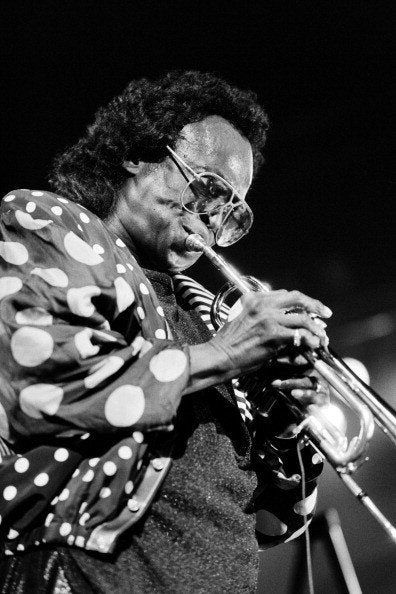
The early 60s were not a great time for me. I was overweight, rarely got beyond first base with girls, and was enrolled in engineering school, a stunningly mismatched career choice for me. Unlike many of my classmates, I didn't tinker with hot cars or ham radios, though I ate more than my share of ham sandwiches.
The only bright spots in my bleak late adolescent landscape were football, a barely adequate outlet for my pent up sexual tensions, and the jazz clubs of Philadelphia.
When I wasn't struggling late over homework, I would often venture downtown on my own into neighborhoods where nice Jewish boys rarely went to two of my favorite clubs -- Pep's Showbar on South Street and the Show Boat just around the corner on Lombard. I wasn't 21, the minimum age for getting into places where alcohol was served, but the guys at the door didn't care as long as I had the two buck cover change.
For hours I would sit at the bar, nursing a beer while watching Roland Kirk, before he was Rahsaan, crawl blindly (literally) around the bandstand looking for his nose flute; Chico Hamilton, the epitome of cool in my awkward adolescent mind, dance his mallets over the taut skin of the drums; and the vein in Elvin Jones forehead (John Coltrane's drummer) bulge as if it were about to burst during one of his many extended drum solos. The bandstand was only a few feet from where I sat. If I wanted, I could have leaned over, reached out and touched the musicians' razor sharp cuffs breaking perfectly across their shining, patent leather shoes.
The music was still new to me. While I watched and listened, complex melodies wrapped around and through each other and the sheer energy of the music infused my body. I couldn't keep still, bouncing in time with the barely discernible rhythms. I was transported somewhere else, somewhere very far away from my unhappy, unpromising life.
I wasn't one of those "white negroes" that Norman Mailer used to write about -- jive-talking, white urban hipsters who stuffed themselves into skinny "ivy league" suits and tried to emulate the speech and graceful, loose-limbed attitude of hip (hep) black males. I was just a dorky kid who really "dug" the music. Besides, I couldn't fit into those skinny suits.
The music is what drew me downtown and into the clubs, but the opportunity to merge invisibly with the coolest denizens of the late 50s/early 60s bohemian world was an added attraction. No one paid any attention to me, allowing me to observe the men slapping palms and riffing with each other and with the cool women at the bar sipping their exotic drinks.
Fifty years later I still haunt jazz clubs for the latest music and surreptitious observations of an exotic culture. My locus has shifted from Philadelphia to Los Angeles, and the smoky, dinghy clubs of yore have been replaced by sleek, modern, smoke free venues. My favorite club is the Blue Whale in the heart of Little Tokyo just east of downtown. The walls are decorated with black and white photos of musicians, the ceiling is hung with geometric panels covered with poetry in stylish script, and the room is filled with upholsterered cubes for sitting, with the occasional folding chair for geezers like me with back problems.
The musicians and the audience reflect the ethnic diversity of Los Angeles -- white, Asian, Armenian, with a sprinkling of Latinos and African Americans. Most are in their 20s and 30s and are dressed in jazz grunge style -- hoodies, assorted hats, faded jeans, and worn tennis shoes - and sport wispy tufts of hair under their bottom lips. Like all good jazz clubs, the color palette is dark -- dark decor, dark clothes, and surprisingly for Southern California, mostly dark hair. No surfer dudes here. Between sets they read and thumb their smart phones.
Unlike the Philly clubs many years ago, the musicians, mostly local, are not yet famous. But the music is excellent -- adventurous and played with a virtuosity that could only come from decades of lessons and practice. Jazz is alive and well among the younger generation, who are still pushing the boundaries, unlike their older counterparts in the glitzier, mainstream clubs of Hollywood, Orange County and the San Fernando Valley.
But I'm still invisible. Yet again I'm immersed in a world I'm not part of, except in our shared love of the music. Like 50 years ago, no one seems to notice me -- I'm too old or too unknown, instead of too young and too white. That suits me just fine. In this age of constant connection, I'm happy to fade into the furniture, the better to observe and reflect.
One thing has changed though. Most nights I can barely make it to the second set. It's way past my bed time.
